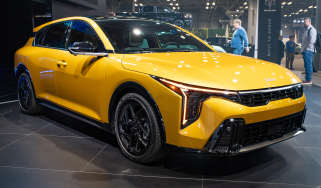Lotus Emira review - MPG, CO2 and running costs
Thirsty V6 and high tax bills are somewhat offset by excellent residual values

Lotus lists only CO2 figures for the Emira, but through the magic of mathematics it’s fairly easy to extrapolate the combined consumption for both the 2.0-litre and the V6 versions. The turbocharged inline four is said to produce 199g/km of CO2, which equates to about 32.9mpg, while the V6’s 258g/km figure is a return of around 25.4mpg.
That puts the four-cylinder a fair way behind the 41.5mpg maximum and 153g/km claimed of an Alpine A110, but the six-pot is roughly on a par with the Porsche Cayman GT4’s 26.4mpg and 242g/km, depending on specification. In reality, both figures will fluctuate depending on whether you’re touring or tearing up corners. With a 60-litre tank, the four-cylinder should be good for a tank range of just over 400 miles, and the V6 just over 300 miles.
The AMG-engined car meanwhile will attract a first-year road tax (VED) bill of £1,565, while the V6’s 258g/km puts it in the top VED bracket, with a £2,605 fee for its first year of vehicle tax.
Insurance groups
Lotus doesn’t publish insurance groups for the Emira, but you can expect to find it somewhere in the 40-50 range, alongside rivals such as the Porsche Cayman (groups 42-50) and the Alpine A110 (groups 47 and 48).
Check any car's MoT history in a few easy clicks with our MoT checker tool...
Depreciation
Modest production volumes, loyal customers and pent-up demand seem to be working their magic on the Emira’s residual values. We only have data on the V6 variant at this stage, but after three years or 36,000 miles, the Emira is expected to retain 70 per cent of its initial value – more than the 57-63 per cent of a Cayman, and even ahead of the already strong 67-69 per cent for an Alpine A110.
To get an accurate valuation on a specific model check out our valuation tool...









